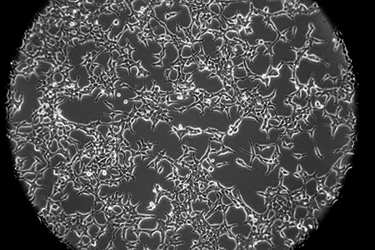Production Of Adenoviral Associated Viral (AAV) Vectors In Chemically Defined Conditions In Flatware
By Randy Alfano, PhD, VP Product Development, InVitria

Adenoviral associated viral (AAV) vectors used in gene therapy have received notable attention considering the recent clinical successes. Traditionally, production of these vectors is achieved by triple transient transfection using the adherent HEK293 cell line in fetal bovine serum (FBS)-supplemented basal media, such as DMEM. The basal media provides nutritional support as well as buffering capacity for the cells while FBS provides the appropriate mitogenic and survival signaling. Collectively, this media/supplement combination supports HEK293 cell growth to achieve densities appropriate for transfection and subsequent vector production.
Although proven successful at small scale in terms of commercially viable AAV titers, use of this substance for large scale clinical manufacturing applications represents a significant safety risk due to potential adventitious agent contamination, unreliable supply chain from limited global supply, and considerable variability in vector yield due to lot-to-lot composition variations.
Though FBS composition has considerable variability, several key protein components have been thoroughly characterized and the functional contribution in cell culture media is well understood. Serum albumin provides multiple functions in vitro, including antioxidant, macromolecule delivery, and free radical scavenger functions. Serum transferrin delivers iron to cells via catalytic cycling. Cytokines deliver the necessary mitogenic signaling to maintain the proliferation rate and promote survival of HEK293 cells.
To enhance the degree of chemical definition in methods used in AAV manufacturing, a recombinant human transferrin and recombinant human albumin were used to formulate a chemically defined serum-free media that is optimized specifically for production of viral vectors, including AAV, in HEK293 cells. The growth kinetics, transfection efficiency, and productivity of
this chemically defined media are compared to those of DMEM + 10% FBS in 2D culture.
In this paper the data provides proof of principal that poorly defined and blood-derived components can be replaced for chemically defined and blood free solutions in adherent HEK-based AAV production.
Get unlimited access to:
Enter your credentials below to log in. Not yet a member of Cell & Gene? Subscribe today.
